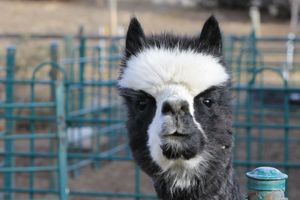
BISON
Bison bison
People may often use the terms “bison” and “buffalo” interchangeably, but they are two different species of animals. Bison are native to North America and Europe, whereas the buffalo are native to Africa and Asia (like the cape buffalo or water buffalo). The referencing of bison as buffalo likely came from the French word for beef, boeuf. Bison are herbivores meaning they only eat vegetation but are also known as yearlong grazers and must move continuously as they eat. The large hump on their backs and shoulders is a giant muscle that gives power to their head to move back and forth to clear deep snow to reach the grass and clear a path. Bison also have cloven hooves, which can help turn the soil and allow many plants and animals to thrive. In 2016, the bison became the national mammal of the United States.
Click HERE for a Bison Activity Sheet!
Our Current Residents
Bert, Male - Born September 1, 2017
Bert is the older of our two male bison and was donated to ZooMontana in 2018 after recovering from an injury. When he was a calf, also called a red dog, his herd trampled Bert and broke his leg. Although he has healed completely, he seemed to have imprinted on humans and will spend his time here at ZooMontana.
Although it may be difficult to tell the two bison apart, Bert is currently a little bit larger than Jay and is a bit more accustomed to humans and staff.
Jay, Male - Born June 30, 2021
Jay is Bert’s first calf here at the zoo. Unfortunately, his mother Nellie passed away a few months later, but Bert continued to raise Jay.
As mentioned earlier, the two bison do appear very similar, but Jay will appear slightly smaller than Bert and is a bit more cautious as well.
Taxonomy
- Kingdom: Animalia
- Phylum: Chordata
- Class: Mammalia
- Order: Artiodactyla
- Family: Bovidae
- Genus: Bison
- Species: Bison
Animal Facts
Herbivore: mainly eat grass and sedges, but also flowers, leaves, and other vegetation
Population Status (according to IUCN): currently listed as Near Threatened
Montana Population Status (according to Montana Field Guide): currently listed as Species of Concern
Habitat: grasslands and meadows
Activity: diurnal- mostly active during the day

















































